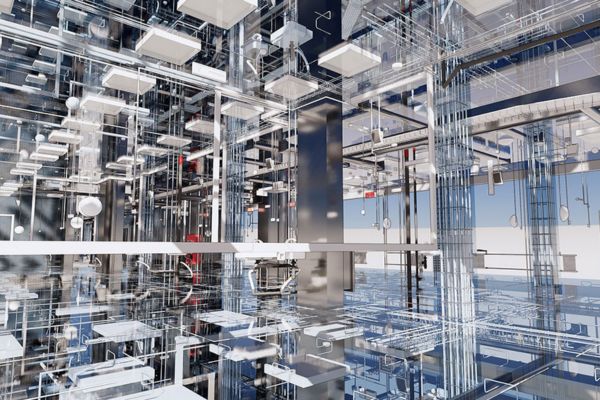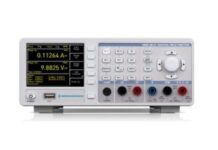The manufacturing industry is undergoing a seismic shift as it embraces smart factory paradigms powered by innovative technologies. These advanced facilities promise a synergy of productivity, safety, and efficiency, redefining traditional operations and paving the way for a sustainable industrial future. At the core of this transformation are innovative strategies that integrate safety, time management, and motion optimisation, fueled by advancements in IoT, AI, and real-time analytics.
Future Technology as the Catalyst for Smart Factory Transformation
Smart factories are not just an evolution; they represent a revolution driven by future technologies such as Artificial Intelligence (AI), Internet of Things (IoT), robotics, and edge computing. These technologies allow factories to operate with unprecedented levels of automation, precision, and adaptability.
For instance, predictive maintenance powered by AI ensures that machinery operates without unexpected breakdowns, saving time and reducing operational costs. Autonomous robots collaborate with human workers, performing repetitive and high-risk tasks with accuracy while freeing human talent to focus on more strategic roles. Edge computing complements this ecosystem by processing data locally, reducing latency, and enabling real-time decision-making.
Moreover, digital twins—virtual replicas of physical systems—enable manufacturers to simulate, analyse, and optimise production processes before actual implementation. This technology not only accelerates innovation but also ensures resources are utilised efficiently, aligning sustainability goals.
IoT and AI: A Dual Force Enhancing Worker Safety
Safety in manufacturing has always been a critical priority, and IoT combined with AI is taking it to the next level. Smart sensors embedded in factory environments monitor variables like temperature, humidity, and toxic gas levels, providing real-time alerts to prevent accidents. Wearable devices equipped with IoT connectivity can track workers’ vitals and alert supervisors if an individual shows signs of fatigue or stress, significantly reducing the likelihood of workplace injuries.
AI enhances this ecosystem by analysing vast datasets to identify potential safety hazards. For instance, computer vision algorithms can detect unsafe behaviors or conditions, such as workers entering restricted zones or machinery operating without proper safeguards. These systems can proactively intervene, stopping operations or notifying relevant personnel.
Additionally, AI-driven training modules use augmented reality (AR) to simulate hazardous scenarios in a controlled virtual environment, equipping workers with the skills and knowledge to respond effectively in real-world situations.
Real-Time Data: The Backbone of Efficient Workflows
In the smart factory, data is the new oil, and real-time analytics is the refinery. Sensors, connected machinery, and IoT devices generate a continuous stream of data that provides actionable insights into every facet of the production process.
For example, real-time tracking of inventory levels enables just-in-time supply chain management, ensuring materials are available precisely when needed. Machine learning algorithms analyse this data to optimise workflows, minimising downtime and bottlenecks. This leads to smoother operations and a significant boost in productivity.
Another critical application of real-time data is motion analysis. Sensors and Cameras track the movement, actions and postures of workers and machinery, identifying inefficiencies, compliance to Standard Operating Procedures, near-misses and accidents, recommending adjustments to enhance ergonomics and reduce fatigue. By optimising these movements, factories not only improve output but also safeguard the physical well-being of their workforce.
The Human Element in the Smart Factory
While technology forms the backbone of smart factories, the human element remains indispensable. The transition to smart manufacturing is as much about empowering workers as it is about technological upgrades. By automating mundane tasks, these facilities allow workers to focus on creative problem-solving and strategic decision-making, fostering a more engaged and satisfied workforce.
Furthermore, the collaborative potential of humans and machines is immense. Cobots—collaborative robots—work alongside humans, assisting in tasks that require a combination of precision and adaptability. This partnership ensures that human intuition and machine efficiency are leveraged to their fullest potential.
Sustainability as a Byproduct of Efficiency
A significant but often overlooked benefit of these advancements is their contribution to sustainability. By optimising time, motion, and energy consumption, smart factories reduce waste and lower their carbon footprint. IoT-enabled energy management systems can monitor and minimise power usage, while AI algorithms identify opportunities for recycling and resource optimisation.
Final Thoughts
The journey toward building smart factories is a testament to how technology and human ingenuity can come together to create a safer, more efficient, and sustainable manufacturing environment. As IoT, AI, and real-time analytics continue to evolve, their integration into safety, time, and motion strategies will drive the future of manufacturing, ensuring that smart factories are not just intelligent but also human-centric and environmentally responsible. The smart factory revolution is not a distant dream—it is here, shaping the industry one innovation at a time.

By Anup S S, Practice Head, Artificial Intelligence, Tata Elxsi
















